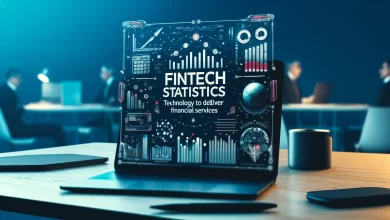Navigating the Digital Payment Revolution

Developers are at the epicenter of the payment revolution with commerce becoming digital by default. They must navigate a complex web of emerging trends, evolving solutions and heightened customer expectations in an increasingly interconnected digital payment ecosystem, often leveraging advanced fintech software development and strategic ERP integration.
The stakes are high: Experts project the digital payments market to grow from $11.53 trillion in 2024 to $16.59 trillion by 2028. Business success heavily relies on providing secure, efficient and seamless digital payment experiences that leverage synergies between various technological solutions, such as fintech software and AI.
Traditional payment systems and enterprise resource planning (ERP) solutions are being challenged by cutting-edge finance applications and microservices, forcing developers to adapt swiftly and innovate relentlessly. These emerging technologies and solutions must work in harmony to create a cohesive and efficient digital payment landscape. To thrive, developers must strategically future-proof ERPs, select the right fintech software, and leverage AI to create seamless payment experiences that recognize the intertwined nature of these solutions.
Future-Proofing Your ERP
To future-proof ERPs and overcome challenges posed by finance applications and microservices, software developers must integrate cutting-edge technologies into existing systems. This integration enables businesses to adapt seamlessly to the evolving digital payment landscape and maintain a competitive advantage.
Key technologies and strategies for future-proofing ERPs include:
-
-
- Cloud-based solutions: Migrating ERPs to the cloud provides a scalable, secure and flexible infrastructure that facilitates the integration of new payment methods and microservices.
- API-driven architecture: Adopting an API-driven architecture allows for seamless integration between ERPs and cutting-edge payment solutions, enabling efficient and secure transaction processing.
- Artificial Intelligence and Machine Learning: Incorporating AI and ML technologies into ERPs can automate processes, improve decision-making and enhance fraud detection capabilities.
- Blockchain technology: Integrating blockchain into ERPs can increase transparency, security and efficiency in payment processing and financial transactions.
- Microservices architecture: Implementing a microservices architecture enables developers to build and deploy modular, independently scalable services that can be easily integrated with ERPs.
-
Focusing on these key technologies and strategies will position businesses to excel in the digital payment revolution.
The Developer’s Role in Finance Software Selection
Choosing finance software based only on reviews and analyst reports is like buying a house by just looking at the Zillow listing. A comprehensive and tailored evaluation process is necessary for selecting software that meets the organization’s unique needs and goals.
Software developers’ input is critical. With their expertise, they can thoroughly assess the technical capabilities and limitations of potential software solutions, ensuring compatibility with existing systems while identifying opportunities for customization or integration. Developers also evaluate scalability and performance by analyzing the software’s architecture and infrastructure. This analysis helps determine the software’s capacity to handle current and future transaction volumes and performance requirements.
Furthermore, developers can assess the feasibility of customizing existing software or developing bespoke solutions to address unique business needs, weighing the costs and benefits of each approach. Collaboration with stakeholders is another integral aspect of their role. By closely working with finance teams, executives and end-users, developers gather valuable insights into specific pain points and requirements.
By actively involving software developers in the selection process, organizations can make informed decisions, balancing technical considerations with business objectives for long-term success. However, evaluations must be weighed accurately; If the decision leans too heavily in favor of the developer, it may result in overlooking significant business impacts.
Leverage AI in Payment Solutions
The growth of the digital payment landscape demands the latest technology. Enter AI, a cutting-edge force promising to transform the finance industry through hyper-automation and intelligent solutions. As businesses seek to stay ahead, software developers with AI and machine learning (ML) expertise have never been more critical.
AI revolutionizes payment solutions in several key areas. For example, businesses can now leverage cutting-edge algorithms to detect and prevent fraud in real time, safeguarding financial transactions. Additionally, AI-driven virtual assistants and chatbots ensure round-the-clock customer support, addressing payment-related inquiries and issues with efficiency and personalized care.
Intelligent payment routing tools analyze various factors, like transaction costs and processing times to optimize payment routes, enhancing overall payment efficiency. AI can also personalize payment experiences based on individual user preferences, behaviors and transaction histories.
Software developers must acquire AI/ML skills, collaborate with domain experts and prioritize data privacy and security. This approach is crucial for effectively designing and implementing intelligent systems that meet user needs while safeguarding sensitive information. By leveraging AI, developers can drive innovation, enhance efficiency and deliver superior user experiences, positioning businesses for success in the digital payment revolution.
Software developers play a vital role in shaping the future of payments by embracing new technologies and collaborating with industry platforms. By focusing on future-proofing ERPs, selecting the right finance software and harnessing the power of AI, developers can effectively navigate the rapid evolution of payments.




